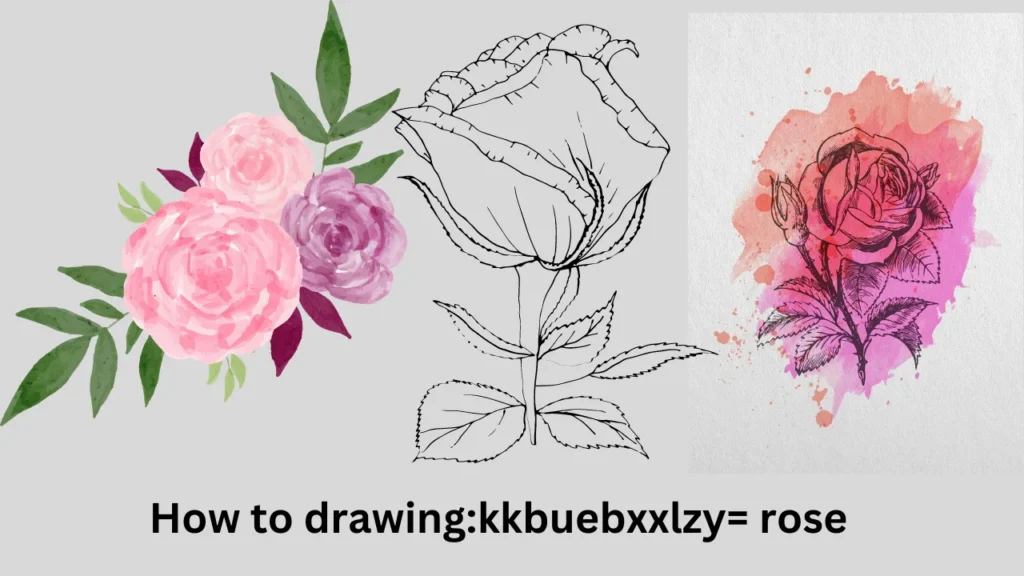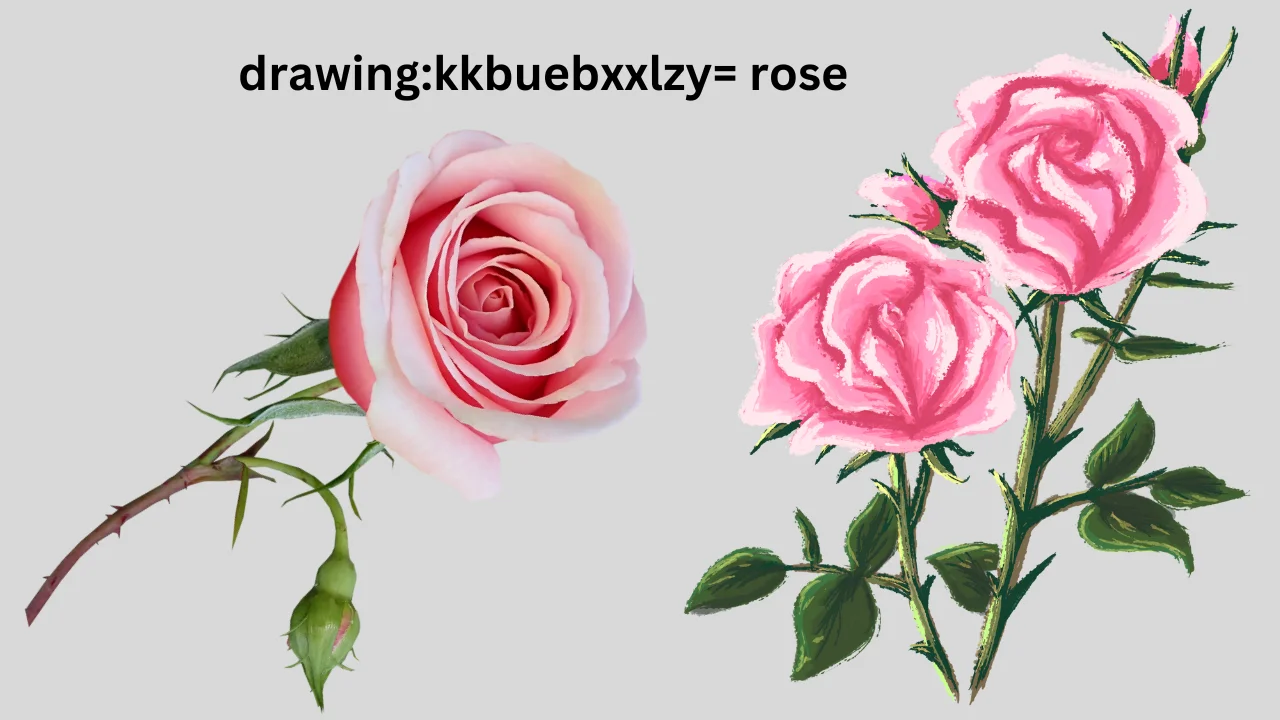The drawing:kkbuebxxlzy= rose is a powerful way to express emotions and ideas through lines, shapes, and shading. Among the many subjects to draw, roses stand out due to their beauty and complexity. In this guide, we’ll explore the techniques and methods to master the art of drawing:kkbuebxxlzy= rose. Whether you’re a beginner or someone with experience in drawing, this guide will provide valuable insights to enhance your skills.
What is drawing:kkbuebxxlzy= rose
Drawing a rose refers to the artistic process of creating an image of a rose using various drawing tools such as pencils, pens, or digital devices. This involves sketching the basic shape of the rose, outlining its petals, and adding details like shading and texture to make the drawing look realistic. Roses are a popular subject for artists because of their intricate and beautiful structure, which provides both a challenge and an opportunity for creativity in capturing their delicate petals and overall form.
| Aspect | Description |
|---|---|
| Petal Formation | Focus on the irregular shapes and overlapping of petals to create a realistic rose. Each petal should have a slight curve and unique characteristics. |
| Center of the Rose | The heart of the rose contains tightly packed petals. Pay attention to detail and shading to capture the depth and complexity of this area. |
| Stem and Leaves | Include a slightly curved stem and leaves with serrated edges. Ensure the veins on the leaves are visible for added realism. |
| Shading | Identify the light source to determine where to apply shading. Use different pencil grades to create a gradient effect, blending smoothly between light and dark areas. |
| Tools Needed | Pencils (H to B grades), high-quality drawing paper, kneaded eraser, blending stumps or tortillons. |
The Structure drawing:kkbuebxxlzy= rose
Before you start drawing, it’s important to understand the structure of the flower. A rose is composed of several layers of petals that spiral around a central point. The petals overlap each other, creating a complex and beautiful pattern. This structure makes roses challenging yet rewarding subjects for artists.
To capture the intricate details, you need to pay attention to the following aspects:
Petal Formation:
The petals of a rose are not perfectly symmetrical. They vary in size and shape, giving each rose its unique appearance. When drawing rose, focus on the irregularities to make your drawing more realistic.
Center of the Rose:
The center, or the heart of the rose, is often the most detailed part. It consists of tightly packed petals that gradually open outward. Capturing this detail requires careful observation and precise shading.
Stem and Leaves:
Don’t forget the stem and leaves when drawing rose. The stem is usually straight but can have slight curves, while the leaves have a serrated edge with visible veins.
Tools and Materials for drawing:kkbuebxxlzy= rose
The right tools can make a significant difference in your drawing. For drawing= rose, you’ll need:
Pencils:
A range of pencils from H to B grades will help you achieve different levels of shading and detail. H pencils are harder and lighter, ideal for outlines, while B pencils are softer and darker, perfect for shading.
Paper:
Choose a high-quality drawing paper that can handle shading and erasing without tearing.
Erasers:
A kneaded eraser allows you to lighten areas without completely removing the graphite, essential for subtle highlights.
Blending Tools:
Blending stumps or tortillons help in smoothing out pencil lines and creating soft transitions between shades.
How to drawing:kkbuebxxlzy= rose

Now that you have your tools ready, let’s dive into the drawing process.
Sketch the Basic Shape
Start by lightly sketching the basic shape of the rose. Draw a small circle in the center of your paper to represent the rose’s heart. Around this circle, draw larger circles to outline the outer petals. These circles don’t need to be perfect; they serve as a guide for placing the petals.
Draw the Petals
Begin drawing the petals around the center. Each petal should curve slightly, and they should overlap each other. Pay attention to the direction of the petals, as they should spiral outward from the center. When drawing= rose, keep the lines light so you can easily make adjustments.
Add Details and Texture
Once the basic outline is complete, start adding details to the petals. Notice how each petal has a unique shape, with curves and edges. Add these details to make your rose look more natural. Use your pencil to create soft lines for the texture of the petals.
Shading
Shading is crucial in bringing your drawing to life. Start by identifying the light source in your drawing= rose. The side of the rose facing the light source will be lighter, while the opposite side will be darker. Use different pencil grades to create a gradient effect. Blend the shades to achieve a smooth transition between light and dark areas.
Final Touches
After shading, review your drawing for any areas that need refining. Add more details to the petals, adjust the shading, and make sure the rose looks balanced. Don’t forget to add the stem and leaves, using similar shading techniques to create a cohesive look.
Common Mistakes to Avoid
When drawing rose, there are some common mistakes that beginners often make. Here’s how to avoid them:
Overcomplicating the Drawing:
It’s easy to get caught up in the details, but remember to start simple. Focus on the basic shapes and gradually add details.
Ignoring the Light Source:
Shading without considering the light source can make your drawing look flat. Always determine where the light is coming from before you start shading.
Symmetrical Petals:
Roses are naturally irregular, so avoid making the petals too symmetrical. Embrace the natural imperfections.
Uses of drawing:kkbuebxxlzy= rose
Here are some uses for learning how to draw a rose:
Artistic Expression:
Drawing roses allows artists to express emotions and ideas through a beautiful and symbolic subject. Roses can represent love, beauty, and complexity, making them a powerful element in visual storytelling.
Skill Development:
Practicing drawing roses helps in developing and refining essential drawing skills such as shading, understanding light and shadow, and capturing intricate details. These skills are transferable to other forms of art and can improve overall artistic ability.
Decorative Art:
Rose drawings can be used to create decorative art for various purposes, such as greeting cards, posters, and wall art. The elegance of a rose drawing adds a touch of sophistication to any design.
Therapeutic Activity:
Drawing is often used as a therapeutic activity to reduce stress and promote relaxation. Focusing on the detailed process of drawing a rose can be a calming and meditative experience.
Educational Purposes:
Learning to draw a rose can be an educational tool for teaching concepts such as symmetry, geometry, and the use of perspective in art classes. It also helps in understanding the anatomy of flowers and nature’s design.
Gift Creation:
Handmade rose drawings make for personalized and thoughtful gifts. Whether framed or incorporated into a card, a rose drawing adds a personal touch that is appreciated by recipients.
Portfolio Building:
For aspiring artists, including rose drawings in a portfolio showcases their ability to handle detailed and complex subjects, demonstrating their artistic range to potential clients or schools.
Tattoo Design:
Roses are a popular choice for tattoos. Learning to draw them accurately and beautifully can be useful for designing custom tattoo art.
Frequently Asked Questions
What is the best way to start drawing a rose?
Start by sketching the basic shapes, such as circles and ovals, to outline the structure of the rose. Focus on drawing the center first, then gradually add the outer petals, keeping in mind their irregular shapes and overlaps.
What tools do I need to draw a realistic rose?
You’ll need a range of pencils (from H to B grades), high-quality drawing paper, a kneaded eraser for subtle highlights, and blending tools like stumps or tortillons to smooth out shading.
How can I make my rose drawing look more realistic?
To achieve realism, pay close attention to the light source for accurate shading, use a variety of pencil grades to create depth, and carefully observe the unique curves and edges of each petal.
Conclusion
Mastering the art of drawing:kkbuebxxlzy= rose is a rewarding experience. By understanding the structure of the rose, using the right tools, and practicing regularly, you can create beautiful and realistic rose drawings. Remember to take your time, focus on the details, and enjoy the process of bringing a rose to life on paper.This guide has provided you with the steps and tips necessary to improve your drawing skills.
